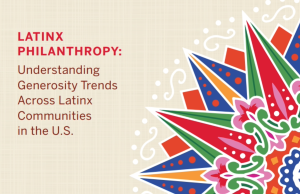Access to capital has always been one of the social sector’s primarily challenges. Lindsay Beck and Catarina Schwab believe they’ve come up with a way to address that shortcoming, unveiling the first product in which a financial return might be earned through an investment in a nonprofit.
The two are co-founders of NPX, a for-profit company that announced its first Impact Security, in which people pledge a donation but investors also buy into a project and potentially earn a return if certain goals are met. Beck and Schwab both have backgrounds in finance as well as nonprofits, Beck as an executive director and Schwab in development.
The first, four-year pilot program involves The Last Mile, a San Francisco, Calif.-based nonprofit working to fund a web development shop inside San Quentin State Prison. The Last Mile will receive $800,000 immediately and as it progresses toward the goal of 18,000 inmate hours worked, the donor fund will disperse up to $900,000 to the organization to re-pay investors.
The 16 donors include Giving Pledge members, Richard Branson and the San Francisco Foundation. The eleven investors include the Omidyar Network.
The maximum return is 12.5 percent over four years. Investors could lose some or all of their investment and donors in the fund could re-deploy the remaining funds to other nonprofits of their choosing if The Last Mile falls short of its goals.
It’s similar to a Social Impact Bond (SIB) but the Impact Security is backed by private donors rather than government. It’s structured as a debt security and is exempt from oversight by the Securities and Exchange Commission (SEC) since it’s issued by a nonprofit.
Investors in The Last Mile pilot will be repaid $50 for every hour worked, up to 18,000 hours over the four years. For the donor, it’s a charitable contribution, which can earn a tax deduction while for the investor it can be either a capital gain or a loss. The pledge could be donated immediately or pooled into a donor-advised fund or foundation. If the project doesn’t meet its projections, donors can redeploy their donation though not receive another deduction.
“This enormous wave of impact investing dollars — trillions of dollars — we as nonprofits have been locked out of that despite high impact work,” Beck said, because there’s been no vehicle to access it. The Impact Security aims to change behavior and “meet donors where they are now,” she said.

A for-profit company, NPX will earn a transaction fee — it cannot be a percentage rate because they are not broker dealers — at the launch of each deal. It’s the same way a consulting project earns a fee, so it will vary depending on the work and donor but in line with that’s typically earned, Schwab said.
The goal is to move the cost of capital from 20 percent or higher, sometimes 50 percent for events like charity galas, to closer to the for-profit cost of 5 to 10 percent.
NPX will target private philanthropy, high net-worth individuals (HNW), and family and corporate foundations, Schwab said. They believe the impact security will open a new pool of funds and bring new investors to the sector, sharing risk. “We really want to educate all three of those groups, create a new, better way to fund philanthropy, explicitly linked to impact,” Schwab said.
The industry has moved quickly to better understanding impact, outputs versus outcomes, Beck said. The impact security can be structured for any nonprofit with impact. “They want to have a goal as to what to be measured on,” she said.
Beck described a “pipeline of philanthropists who want to work with us and deploy their donations in a new way.” She believes donors are frustrated with the current donor model and donor fatigue is real.
“In the trenches, people are paralyzed. Giving is going up but a lot of it is going into donor-advised funds,” Beck said. “Regardless of how you want to donate — sit on a board, go to a gala, run a race — you do due diligence, give, and rate impact — a lot of people don’t want to do that,” she said.
The Last Mile is a relatively new and small charity, and $800,000 is more revenue than it has reported in any year of its existence, according to its tax forms:
- $527,373 in 2016, including $350,664 in government grants and $145,095 in other contributions;
- $246,634 in 2015;
- $57,814 in 2014; and,
- $10,500 in 2013.
Schwab said it can be tricky to set metrics for an advocacy organization but they are starting to explore that and there might be a few impact metrics.
Phil Buchanan was unimpressed with the “shiny new toy” for philanthropy. “I don’t know why any nonprofit would want to be on the receiving end of this arrangement,” said Buchanan, president and CEO of the Cambridge, Mass.-based Center for Effective Philanthropy (CEP). “The reality is, we don’t need these made-up new vehicles to do philanthropy in a way that is focused on finding strong organizations that are high-performing and getting results. There are all kinds of examples of that and resources that exist,” he said.
He warned that the idea of an impact security seems to be the growing trend of the “business-ification” of the social sector. “We’ve got to stop pretending that impact can be measured the way profit is measured in the corporate world. It’s total fiction,” he said. Nonprofit leaders are obsessed with results – “That’s why they do their work each day – and philanthropy has been focused on impact and measurement going back to the days of Carnegie and Rockefeller, he said.
“Fundamentally, there’s something to be said for organizations that are focused on mission and are working on the issues that have not lent themselves to profit-making or government solutions,” Buchanan said. When you mix up incentives, you open up the potential for all kinds of problems, and tendency to have to make things work, boil down the performance appraisal to a single metric, which, depending on area of nonprofit work, typically creates a lot of problems.
Antony Bugg-Levine, CEO of The Nonprofit Finance Fund (NFF), is a little more optimistic. “In general, I’m excited by the potential to improve how we solve social challenges by orienting social sector funding around the results our communities need rather than just paying for activities,” he said. “But to be effective, these new funding arrangements need to recognize that for service providers to generate results, they need funding that covers their full costs and to be freed from the red tape and restrictions that can come from either current output-based contracts or overly-prescriptive investors,” he said.
The most effective solutions typically are “built around the needs of communities and the nonprofits that serve them, not investors or the well-intentioned but often removed technocrats who structure new investment products,” said Bugg-Levine, who authored a chapter in the book, What Matters: Investing in Results to Build Strong, Vibrant Communities, published by NFF and the Federal Reserve Bank of San Francisco. Schwab also wrote a chapter in the book.
Brian Mittendorf, chair of the Department of Accounting and MIS at the Ohio State University’s Fisher School of Business, doesn’t see it bringing in new capital. “It uses leverage to put donations in a state of limbo until metrics have been met. So, it’s more a model to hold nonprofits accountable to metrics,” he said via Twitter. “It’s less a novel investment vehicle than it is bail bonds for nonprofits. An ‘investor’ puts up bond and is then incentivized to make sure the nonprofit does what they promised.”
Editor’s note: The original version of this story was modified to correct errors in reporting, which are noted by italics.









